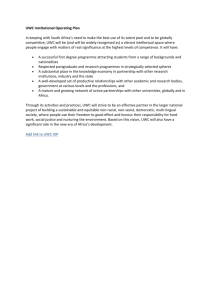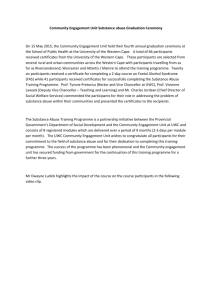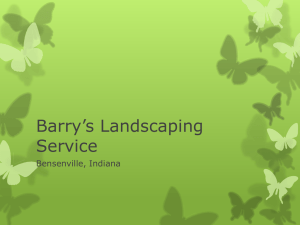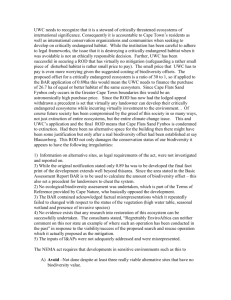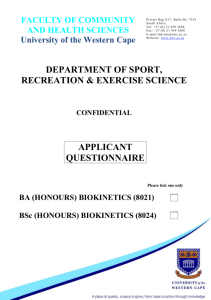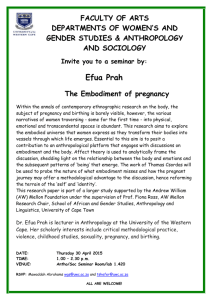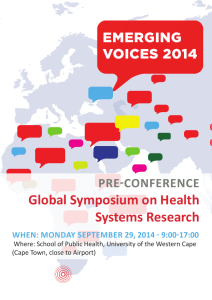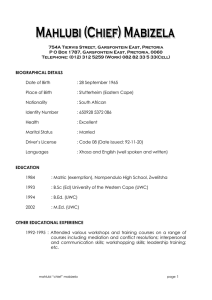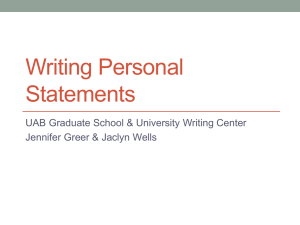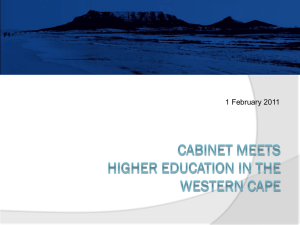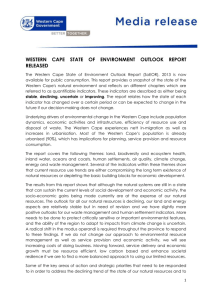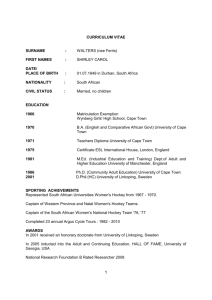During a meeting between the Botanical Society (Drs Bruce
advertisement
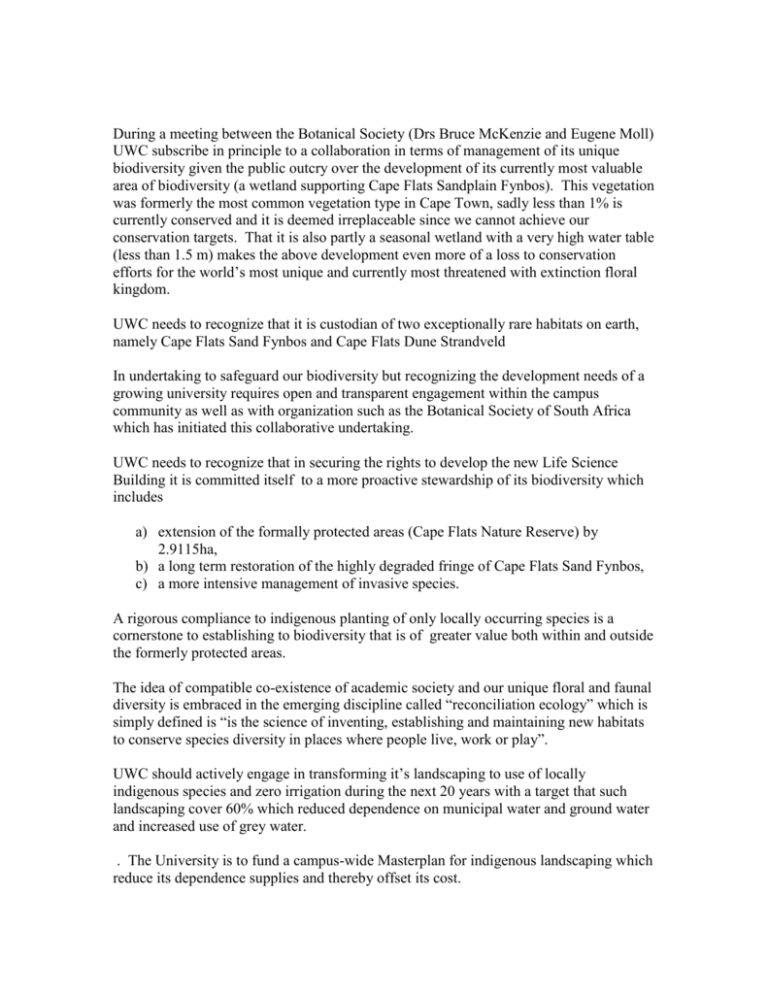
During a meeting between the Botanical Society (Drs Bruce McKenzie and Eugene Moll) UWC subscribe in principle to a collaboration in terms of management of its unique biodiversity given the public outcry over the development of its currently most valuable area of biodiversity (a wetland supporting Cape Flats Sandplain Fynbos). This vegetation was formerly the most common vegetation type in Cape Town, sadly less than 1% is currently conserved and it is deemed irreplaceable since we cannot achieve our conservation targets. That it is also partly a seasonal wetland with a very high water table (less than 1.5 m) makes the above development even more of a loss to conservation efforts for the world’s most unique and currently most threatened with extinction floral kingdom. UWC needs to recognize that it is custodian of two exceptionally rare habitats on earth, namely Cape Flats Sand Fynbos and Cape Flats Dune Strandveld In undertaking to safeguard our biodiversity but recognizing the development needs of a growing university requires open and transparent engagement within the campus community as well as with organization such as the Botanical Society of South Africa which has initiated this collaborative undertaking. UWC needs to recognize that in securing the rights to develop the new Life Science Building it is committed itself to a more proactive stewardship of its biodiversity which includes a) extension of the formally protected areas (Cape Flats Nature Reserve) by 2.9115ha, b) a long term restoration of the highly degraded fringe of Cape Flats Sand Fynbos, c) a more intensive management of invasive species. A rigorous compliance to indigenous planting of only locally occurring species is a cornerstone to establishing to biodiversity that is of greater value both within and outside the formerly protected areas. The idea of compatible co-existence of academic society and our unique floral and faunal diversity is embraced in the emerging discipline called “reconciliation ecology” which is simply defined is “is the science of inventing, establishing and maintaining new habitats to conserve species diversity in places where people live, work or play”. UWC should actively engage in transforming it’s landscaping to use of locally indigenous species and zero irrigation during the next 20 years with a target that such landscaping cover 60% which reduced dependence on municipal water and ground water and increased use of grey water. . The University is to fund a campus-wide Masterplan for indigenous landscaping which reduce its dependence supplies and thereby offset its cost. 5) The Record of Decision indicates the landscaping around development is to use only species endemic to the dog’s leg part of the CFNR. This activity needs to stress that no grass, ornamental plants or trees are to be introduced to the landscaping of the building. I suggest parking areas are to be constructed using grassblocks (e.g. Loffelstein Grassblocks) to allow water permeability and recharge of groundwater reserves. Irrigation is only to be permitted during the establishment phase (3 years maximum) and that no fertilizers nor organic material (other than chipped natural vegetation from UWC) is to be introduced into the landscaping. These rules should apply to any other development that is to be constructed on natural vegetation that was cleared. 6) A natural habitats management and advisory committee needs to be established which also overseas the CFNR management. The advisory committee should include representatives from the City of Cape Town’s biodiversity management, Cape Nature and the Botanical Society and will have the right to engage publicly on issues effecting or impacting biodiversity on the campus. 7) In line with the Rector’s memoranda regarding the site of the Life Science Building, and the suggested “Interpretation Centre for the Nature Reserve” this suggestion needs to be actively supported by UWC management who are tasked to seek funding for its establishment and that one of its focus areas is to advance “Reconciliation Ecology” 7) UWC is to actively engage in transforming it’s landscaping to use of locally indigenous species and zero irrigation during the next 20 years with a target that such landscaping covers two-thirds of the estate within this period. The University is to fund a campus-wide Masterplan for indigenous landscaping which reduce its dependence on municipal water and ground water supplies and thereby offset its cost. 8) UWC is to engage in establishing a permanent lectureship and administrative assistance for its Environmental Awareness Techniques EAT programme and through the engagement of the academic community to pursue the investigation for establishing an Institute for Sustainable Studies (Ifss). 9) UWC needs to develop a policy and regulation framework to reduce its overall carbon footprint and to increase opportunities for recycling and waste minimization over the next 20 years. Further all new buildings are to showcase techniques to reduce use of resources such as water, electricity, sand/concrete etc and showcase some elements of green engineering (e.g. reduced storm water runoff, increased insulation, pumped heat exchange systems to avoid use of air-conditioning etc.) 10) UWC needs to develop a meaningful policy for addressing transport issues onto campus and engage with public sector transport industries in seeking some solutions.
